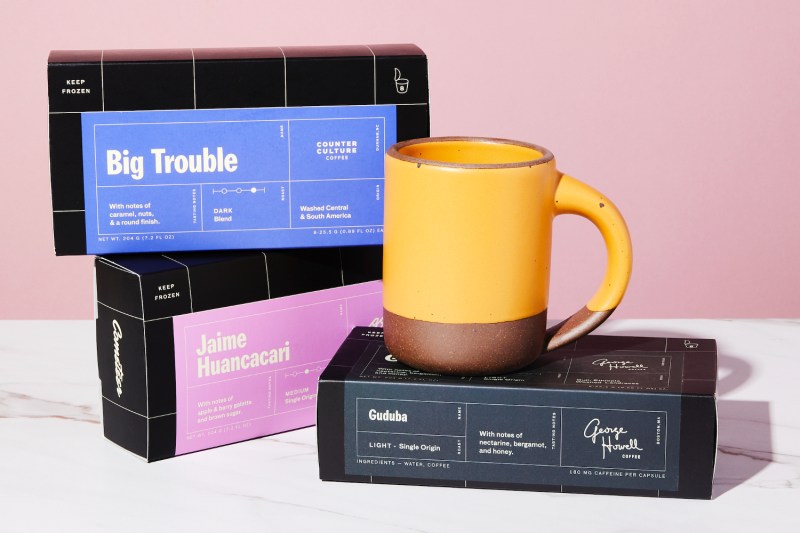For years, instant coffee was terrible. It was meant to caffeinate and do little more. It was easy to make, but it tasted a bit like wet dirt. Times have changed — dramatically — and Cometeer Coffee is proof.
It’s a wild understatement to say that the brand is shaking up the instant coffee realm. Cometeer has basically rewritten the rules, utilizing a flash-freezing procedure that produces a cafe-caliber cup, all while staying true to single-origin terroir and minimizing its environmental impact.

Real quality
Cometeer’s coffees across the board are incredibly smooth, balanced, and delicious. Our favorites include Coltrane, a collaboration with Red Bay Coffee, with dark chocolate, caramelized sugar, and dark fruit. The Big Trouble is equally compelling, a medium roast teeming with toffee notes and a nutty profile. The light roasts are great too, despite being a little softer on the palate. The Nano Genji, floral and fruity, is full of personality, making for a great afternoon cup.
Cometeer is working with some great roasters responsible for some great beans. They work with the likes of Counter Culture, George Howell, and Onyx Coffee Lab, just to name a few. The great flavor makes sense not just because of the roaster clientele but also because of how the stuff is made. Apparently, Cometeer brews a strong-as-jet-fuel batch (10 times stronger than regular coffee) before flash-freezing the pods at negative 321 degrees Fahrenheit. When the pods show up at your door, they come still frozen and packed with dry ice. The fog that sometimes comes from a freshly-opened delivery only adds to the futuristic nature of the product.
Are there downfalls? Not really. It’s a subscription service, so getting additional info on the coffees themselves is a little tricky upfront, but what comes in the delivery is helpful. It’s not cheap, but then again, think about how much you shell out for a cup from your favorite barista.
Fun to make

The process is fun. The box comes with a visual guide on how to produce your cup, which takes little more than some hot water. You run the capsule under warm water until the pod jostles free, then dump it into your mug. You add your hot water from the kettle and milk or cream, if that’s your thing, and you’re done. The pod melts down quickly and evenly, creating a genuinely enjoyable sipper.
In a blind taste test, you’d be hard-pressed to identify this as instant coffee. The nuance of flavors, roundness in character, and variation from roast to roast is remarkable. More impressive, it comes from essentially a concentrated capsule of coffee that just needs some hydration to come to life. We did a double-take after tasting the first round and continue to be impressed by Cometeer’s offerings.
Bonus points must be awarded for the smart design. As reported, single-use coffee pods aren’t as bad for the planet as many thought. Better, Cometeer utilizes a capsule that you can recycle, meaning the only real waste is the metal seal, and the only real energy suck is the process of warming the water (and, of course, whatever is happening in the coffee farms). There are no grounds in these capsules, and therefore, no additional waste. The spent grounds Cometeer produces are even sent to a local composting facility, per the brand’s website.
There are decaf options, and the pods work in Keurig machines. They’re also TSA-friendly, meaning you can fly with them. All in all, it’s a giant step forward not just in terms of instant coffee (it’s hands-down the best



